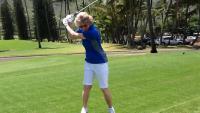Movement Disorders
Make an Appointment
Our team of dedicated access representatives is here to help you make an appointment with the specialists that you need.
Movement disorders describe a variety of abnormal movements of the body that have a neurological basis. These abnormal movements are characterized by changes in the coordination and speed of voluntary movement. They may also involve the presence of additional movements that are not voluntary.
Movement disorders are sometimes referred to by medical professionals as extrapyramidal diseases because this class of disorders is distinct from the disorders caused by disorders of the pyramidal region of the brain . Researchers have determined that movement disorders are caused by diseases in various parts of the brain, including the substantia nigra, the subthalamic nucleus, the globus pallidus, the striatum, and the basal ganglia.
Movement disorders are usually broken down into two types of movement: hyperkinetic movement and hypokinetic movement. Hyperkinetic movement disorders are characterized by a significant and excessive amount of motor activity. This type also includes cases in which there is a significant amount of abnormal involuntary movement. Hypokinetic movement disorders are those in which there is an abnormally reduced amount of intentional motor activity.
Hyperkinetic movement disorders are characterized by two types of behavior: rhythmical and irregular. Tremor is a rhythmic movement that is further divided into three forms: rest, postural, and intention. Rest tremor is most prominent when an individual is at rest and decreases with voluntary activity. Postural tremor occurs when an individual attempts to support a position against gravity (such as holding an arm outstretched). Intention tremor occurs during voluntary movement toward a specific target.
Irregular involuntary movements are classified by their speed and site of occurrence. Tics are rapid irregular movements that are controlled with voluntary effort. The types of rapid irregular movements that cannot be controlled voluntarily are called chorea, hemiballismus, and myoclonus. Chorea is a rapid, jerking movement that most often affects the face or limbs. Hemiballismus is the sudden and extreme swinging of a limb. Myoclonus is a rapid, irregular movement that usually occurs for a short period of time. It usually occurs when the person is at rest, and it often affects more than one area of the body at a time.
One of the most well-known hyperkinetic movement disorders is called Huntington’s disease, characterized by chorea-type movements. This disease is inherited and usually develops between 30 and 50 years of age. Persons with this condition have progressive dementia , and the condition eventually causes death. Children of persons with Huntington’s disease have a 50% chance of developing the condition. Stereotypic movement disorder is characterized by repetitive behaviors that meet no functional need such as hand waving, rocking, head banging, mouthing of objects, or biting, picking, or hitting oneself. These behaviors interfere with normal activities and are not caused by substance abuse or a general medical condition.
The symptoms of hypokinetic movement disorders include a rigid, stone-like face; decreased limb motion during walking; and stiff turning movements. These features are classified as bradykinesia, while akinesia is the absence of purposeful movement. The most common type of hypokinetic movement disorder is Parkinson’s disease, caused by the loss of neurons containing dopamine in the area of the brain called the substantia nigra pars compacta. The loss of these neurons is a part of the alteration of vital motor circuits in the brain that leads to a slowing of intentional movements.
